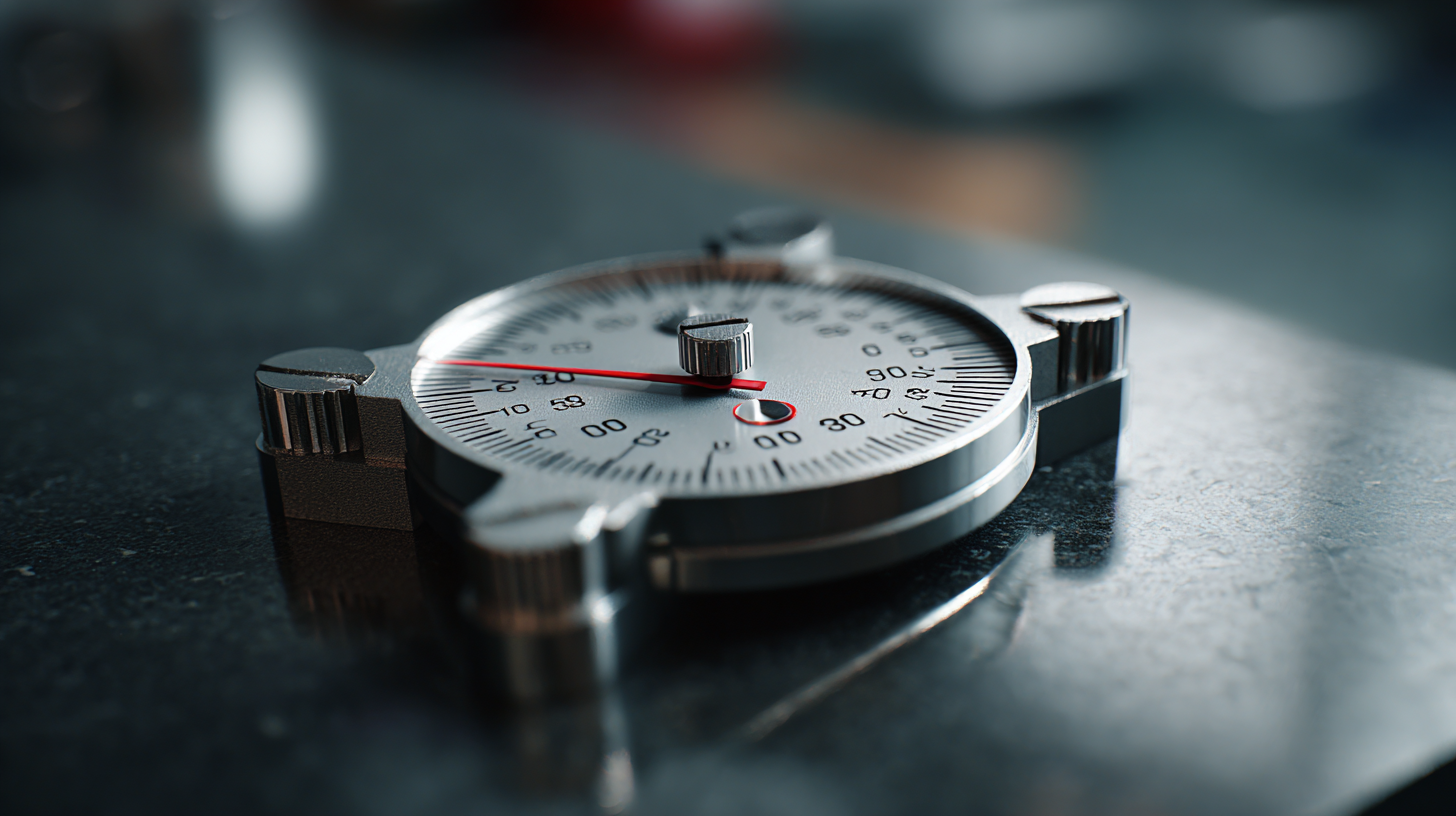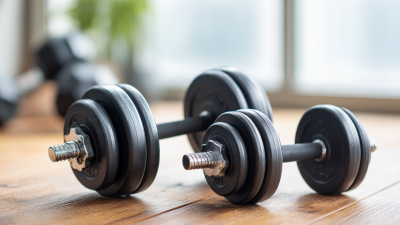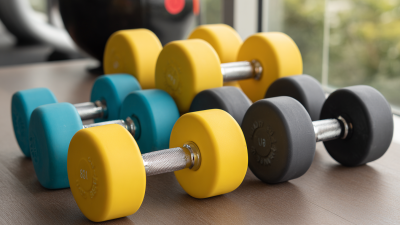In an era where precision is paramount, understanding the role of dial weights becomes essential for both professionals and amateurs alike. As highlighted in the National Institute of Standards and Technology’s (NIST) recent report, the accuracy of measurements in various industries, including manufacturing and healthcare, heavily relies on precise calibration tools like dial weights. These weights serve not only as benchmarks for measuring instruments but also as crucial components in ensuring compliance with stringent regulatory standards.

According to a survey conducted by the International Organization for Standardization (ISO), nearly 70% of companies reported that enhancing measurement accuracy significantly improved their operational efficiency and quality control. Thus, an in-depth understanding of dial weights is indispensable for achieving reliable and consistent measurements in everyday applications.
 Dial weights play a crucial role in achieving accurate weight measurements, essential for various everyday applications, from cooking to scientific research. According to the National Institute of Standards and Technology (NIST), even a small variance in weight measurement can lead to significant discrepancies in research results and commercial transactions. In culinary practices, for instance, precise measurements can directly affect recipe outcomes, highlighting the necessity of reliable dial weights in both professional kitchens and home cooking environments.
Dial weights play a crucial role in achieving accurate weight measurements, essential for various everyday applications, from cooking to scientific research. According to the National Institute of Standards and Technology (NIST), even a small variance in weight measurement can lead to significant discrepancies in research results and commercial transactions. In culinary practices, for instance, precise measurements can directly affect recipe outcomes, highlighting the necessity of reliable dial weights in both professional kitchens and home cooking environments.
Moreover, the accuracy of dial weights is not only pivotal in culinary arts but also in multiple industries such as pharmaceuticals, agriculture, and logistics. A study by the International Organization for Standardization (ISO) indicates that inaccuracies in weight measurements can lead to a staggering economic loss of up to 5% annually across these sectors. This underscores the importance of using calibrated dial weights, which conform to industry standards, thereby ensuring that measurements are consistent and reliable, ultimately sustaining quality control and consumer trust.
Dial weights play a crucial role in ensuring precision measurements across various contexts, from everyday household tasks to industrial applications. In personal use, dial weights can be found in kitchen scales, helping home cooks measure ingredients accurately to create delicious meals. These compact instruments allow users to weigh small quantities with ease, transforming the cooking process into a more reliable and enjoyable experience.
On the industrial side, dial weights serve a vital function in ensuring quality control and safety in manufacturing environments. Industries rely on precise weight measurements to maintain consistency in product standards, manage inventory, and optimize operational efficiency. Heavy-duty dial scales are often employed in warehouses and production lines, where they can withstand rigorous use while providing accurate readings. The versatility of dial weights highlights their importance in both personal and professional settings, enabling individuals and businesses alike to achieve precision and reliability in their measurements.

Calibration plays a vital role in ensuring the precision of dial weight measurements, drastically impacting everyday measurements in kitchens, laboratories, and manufacturing. According to a report by the National Institute of Standards and Technology (NIST), even minor inaccuracies in calibration can lead to deviations in weight readings by as much as 1%. This percentage may seem negligible but can significantly alter the outcome of critical processes, especially in industries where exact measurements are crucial, such as pharmaceuticals and food production.
Furthermore, a study released by the International Organization for Standardization (ISO) indicates that regular calibration of measuring equipment can enhance accuracy by up to 20%. This is particularly important as the reliance on digital scales becomes prevalent. Inaccurate readings due to improper calibration can lead to waste, financial loss, or even safety hazards. Therefore, stakeholders from various sectors are encouraged to invest in routine checks and adhere to recommended calibration schedules to ensure that their dial weights deliver precise and reliable measurements in everyday applications.
| Measurement Type | Dial Weight (g) | Calibration Status | Precision Level (%) | Recommended Use |
|---|---|---|---|---|
| Kitchen Scale | 1000 | Calibrated | 98 | Baking & Cooking |
| Laboratory Scale | 500 | Calibrated | 99 | Scientific Research |
| Postal Scale | 2000 | Not Calibrated | 95 | Shipping & Mailing |
| Jewelry Scale | 100 | Calibrated | 97 | Jewelry Measurement |
| Industrial Scale | 5000 | Calibrated | 99 | Manufacturing |
When it comes to precision measurements in everyday life, selecting the right dial weight is crucial. First and foremost, consider the purpose of your measurement. Different tasks, such as baking, weightlifting, or jewelry making, require specific dial weights to ensure accuracy. For instance, a precision dial weight is essential for calculating the exact amount of ingredients in baking, while a sturdy, higher capacity dial weight is ideal for gym equipment adjustments.
Another important factor is the material of the dial weight. Look for options made from durable materials such as stainless steel or brass, as these provide longevity and stability during use. Ensure that the weight increments are clearly marked, allowing for easy reading. Additionally, examine the design for a comfortable grip, which can make a significant difference when handling weights during repetitive tasks. By focusing on these considerations, you can select the most suitable dial weights for a variety of everyday applications, enhancing both accuracy and convenience.
This chart illustrates the relationship between various uses of dial weights and their accuracy in everyday scenarios. The data demonstrates how choices in dial weights can affect precision in different applications.
Dial weights are essential tools for precision measurements commonly used in various everyday contexts, yet misconceptions about them can significantly affect their accuracy. Many people believe that dial weights offer infallible precision, overlooking the reality that they can be influenced by factors such as calibration issues, environmental conditions, and even user biases. Understanding these limitations is crucial for anyone relying on dial weights for accurate measurements, whether in cooking, health assessments, or scientific applications.
Moreover, the impact of misconceptions extends beyond measurement tools to broader societal issues, such as weight bias in health care. The inaccuracies of Body Mass Index (BMI) as a measurement of health status illustrate how simplified metrics can mislead perceptions and contribute to harmful stigmas. By correcting these misconceptions about dial weights and their role in measurement accuracy, we can foster a more informed perspective that not only improves personal practices but also addresses larger narratives around weight and health in society.






